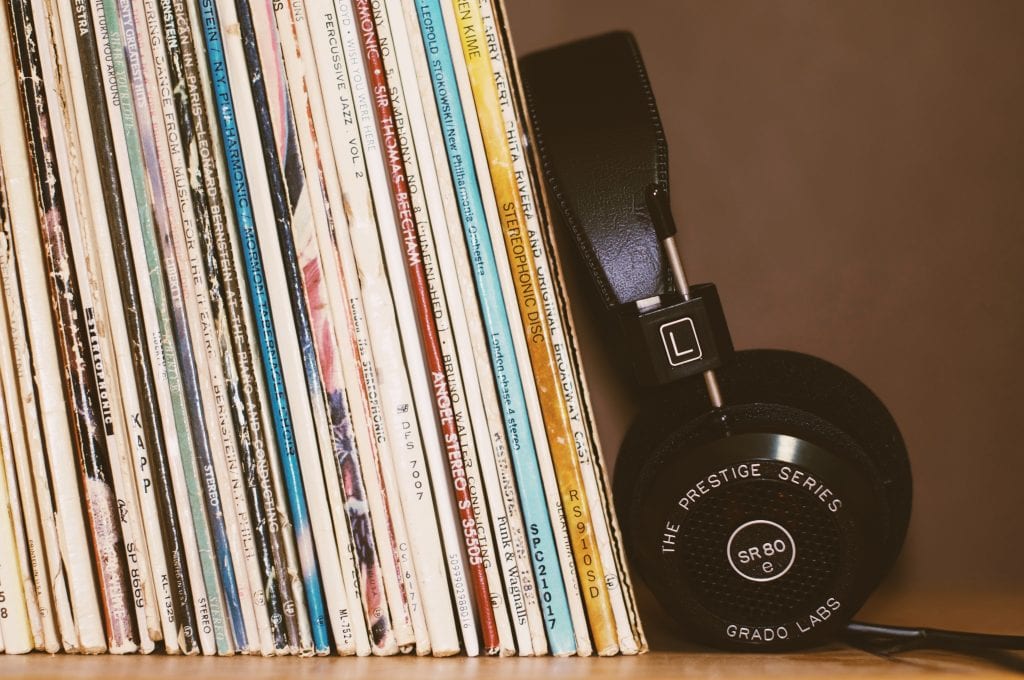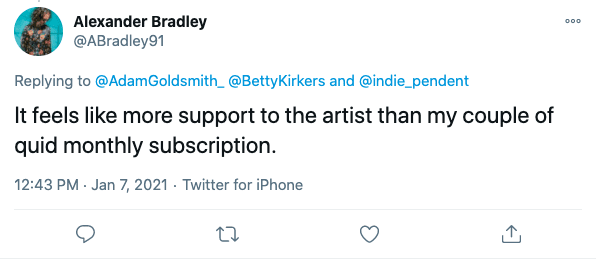The BPI announced 2020’s figures for the UK’s recorded music industry this week, and it looks like good news; recorded music consumption rose by 8.2%. People trapped in their homes resembled not so much a captive audience but a willing one, desperate to continue supporting the artists they love.
These figures are certainly reassuring for the continued existence of a music scene otherwise devastated by the impact of coronavirus. For all the suggestions that the likes of Fatima and her creative industry counterparts should re-train, music continued to be a cultural comfort for many.
However, dig a little deeper, and it becomes clear that this is an industry that is increasingly dominated by the few.
The BPI report shows that the growth in size of the recorded music industry was “led by streaming fuelled by record label A&R and marketing investment”. But, if the industry’s growth is increasingly “led by record labels”, the gap between those who make music as a hobby and their professional peers will continue to widen.
Without the income and exposure generated from live performance, streaming’s dominance means it is increasingly difficult for unrepresented artists to trade unfulfilling part-time jobs for full-time careers in the industry.
The Dilemma of Streaming
Despite the growing significance of its revenue streams, the debate about whether streaming is profitable for artists rages on. It has become such an issue that the government has weighed in; the Department for Culture Media and Sport (DCMS) arranged a committee to examine the impact of streaming on the future of the music industry just before Christmas last year.
The BPI’s findings that streaming is “up by over a fifth”, now accounting for over 80% of the recorded music industry, will no doubt delight controversial Spotify CEO Daniel Ek. Indeed, these figures might affirm his much-maligned comments that music is now a product that “must be churned out regularly”. Many independent artists, on the other hand, will worry about the trends the data shows for a sector increasingly favouring industry giants and their record labels.
Louis Griffin, vocalist of up-coming band Tall Stories – who have just over 200 followers on Spotify – says that “while streaming may be booming, this doesn’t translate to meaningful money for anyone other than the 1%”. He maintains that developing a fanbase through streaming requires the backing of a PR or record label.
For recognised artists whose labels are able to muster up weighty marketing campaigns, there’s no doubt as to the immediate benefits streaming can bring. The BPI reports that more than six times as many artists achieved streams as the equivalent number of sales in 2007. But this equates the financial benefits of a single stream with those of a traditional sale. As the DCMS committee heard from industry experts, this is far from the reality.
The estimate is that artists earn approximately £0.009 per stream. However, there’s little transparency about the accuracy of this figure. During the DCMS enquiry, disco artist Nile Rogers expressed his exasperation at having no idea what a stream is worth: “Does anyone?” he asked. What is clear, says Griffin, is that “streaming only works as a revenue stream at a high volume”.
Nonetheless, as BPI Chief Executive Geoff Taylor recognises, it is true that “streaming has made it easy and affordable for fans to access more music, and also for more artists to reach more fans.”
Indeed, in the midst of this culture of “more”, musical comic J. Henry stresses that “artists don’t have a divine right to make money from their music.” Quite rightly, it is impossible to create a system where every musician is a millionaire. The problem is that without income from live music and the merchandise sales that follow, the inequalities resulting from the streaming model have been exposed. The responsibility, Henry says, “lies with those companies to do the right thing and share their revenue.”
Vinyl to the Rescue?
While streaming now accounts for over 80% of the UK’s recorded music industry, the BPI report shows that the appetite for physical music hasn’t gone away. In fact, vinyl continues to represent a strong source of income for artists; sales of records jumped by 11.5% during 2020 to almost 5 million copies sold.
This reflects the mystical allure of vinyl which continues to hold sway over music-lovers’ wallets. Rock-fan Elle Haywood says that part of the attraction comes in the physical manifestation of the music fans purchase. She says that the “beautiful colours and imagery” on sleeves as well as the artwork inside, invites fans “into the musicians’ world.”
There still exists an enormous emotional connection with vinyl. Many fans like Barney Ridley emphasise the significance of rifling through collections, whether that be in record stores or parents’ dusty attics. He says the added cost is a worthy sacrifice for a chance to “find completely different recordings of songs” or as an opportunity to support those he regularly streams.
For well-established artists, physical record sales can therefore be important to bridging the gaps created by streaming’s low compensation rates. However, for those just starting out, vinyl can also be an inaccessible source of income.
Tall Stories frontman Griffin explains that the process of recording on vinyl isn’t profitable beneath volumes of 150 copies. “If you’re selling less than that, forget it – and if you’re selling more, you’re in for a hefty start up-cost.” This is before you even account for the costs of renting a studio and working with a producer to create high-quality versions of tracks and albums.
Without the financial backing of a record label, smaller artists struggle to take on the risks of publishing their music in a physical capacity. Neither digital nor physical manifestations of their work offer a sustainable source of income.
Before the set-back of a further national lockdown was announced, Nile Rogers emphasised the resilience of musicians: “Whatever we are complaining about, we are still going to get up tomorrow morning and write songs. We can’t help it.” Yet for all Rogers’ positivity, for many artists, there’s a real doubt about the sustainability of making a living from streaming alone. Figures like those released by the BPI this week raise the worry that unless more equitable arrangements are found, music will become the preserve of the privileged.
Words by Adam Goldsmith
@AdamGoldsmith_
Support The Indiependent
We’re trying to raise £200 a month to help cover our operational costs. This includes our ‘Writer of the Month’ awards, where we recognise the amazing work produced by our contributor team. If you’ve enjoyed reading our site, we’d really appreciate it if you could donate to The Indiependent. Whether you can give £1 or £10, you’d be making a huge difference to our small team.


